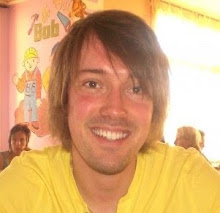At 9am I went to the airport with Bob to drop off the guys at the airport and said bye. I then picked up Karen simultaneously. We caught up and at 1pm we were collected by a driver Jabu for a tour of the Soweto township which I had organised previously. Soweto is the largest township in the country and lies just to the southwest of Johannesburg. It was set up under the apartheid Government to relocate blacks from the city.
Jabu is a friendly, large man who is very knowledgeable on South African history. He used to be a member of Umkhonto We Sizwe, the separate military organisation set up by the ANC and Mandela to undertake sabotage acts on Government buildings and infrastructure during apartheid. It took me about 2 seconds to rashly ask Jabu whether he had been involved in any such acts, to which he just laughed and remained quiet.
We drove through Johannesburg, seeing sights like the Carlton Centre:

Ellis Park Stadium, the stage of the famous 1995 Rugby World Cup final where Nelson Mandela presented the trophy to the captain of the Springboks, Francois Pienaar. I took pictures of the Supreme Court:

And also some general pictures of the Johannesburg skyline:


There were interesting sights along the way, and my snapping was drawn to these youths playing basketball and a section of grafitti on a wall:


On our way to Soweto we passed the Soccer City stadium. This is where the World Cup final will be contested later in the year:

We drove into Soweto taking in the sights of the township:

Many of the businesses run here are funeral directors, sadly due to the high levels of fatalities at the hands of AIDS. As it was the weekend, we saw several funeral processions.
After a while Jabu stopped us at an 'informal' section of housing, effectively a slum:

Jabu said he would pick us up in 15 minutes and that a guide would take us around. I thought he was joking...he wasn't. We were led around and taken into a dwelling where we met Gladys, a lovely and amiable woman who lives there with her 4 children (her husband died). Her house comprises of two rooms and she is one of the lucky ones. There is a kitchen/diner and a separate bedroom with a double bed in it for 5 people. The roof leaks and there is no toilet, electricity or water. Here is Gladys at her home:


Despite the poverty, her children all go to school and the walls of her house are adorned with their homework. The happiness that radiated from this woman struck me and I paid her for her hospitality.
Afterwards I got chatting to two children outside, John and Junior. They wanted their picture taken but, unlike the Cape Town school children, they asked me for money to buy bread. I had been rather naive but here is the expensive picture:

The entire section of the township receives its water from this single tap:

In fact my visit was to be an expensive one. Tours are taken to a different informal area each day on a rotational basis. In each area, salesmen take it in turns to pitch a sale to tourists. After purchasing a stone soap dish which I didn't want I was approached by a second salesman against the etiquette of the arrangement. At this point I felt it was time to leave...after paying our guide!
Public art is common place in Soweto and Johannesburg:

We drove to the Orlando area of the township, seeing Winnie Mandela's house:

And later Nelson's around the corner on Vilakazi Street:

He stayed here often during and before his trials.
Our tour concluded with a visit to the Hector Pieterson museum, remembering the murder of peacefully protecting students who were shot dead by police on the 16th June 1976 during the student uprising:

Under the Government's Bantu educational system during apartheid, middle class whites paid for the education of poor blacks such as those in Soweto through the tax system. To benefit the Afrikaans speaking whites in business and general society it was decided that Afrikaans would be a medium of instruction in schools, alongside English. This meant that many of the children would have to learn two 'foreign' languages in order to simply learn under the educational system, which was already inferior. The protesting children were fired upon by police, most infamously Hector Pieterson on Vilakazi Street. His body was carried away by another student, his sister alongside:

The authorities were held responsible, leading to economic sanctions and seizure of international trade. This was arguably the beginning of the end of apartheid.
The day was another unforgettable one (and very saddening in places) and it left me with not only a better understanding of some of the recent tragic history but with an inside view of township life which I have sought since my arrival in the country.

No comments:
Post a Comment